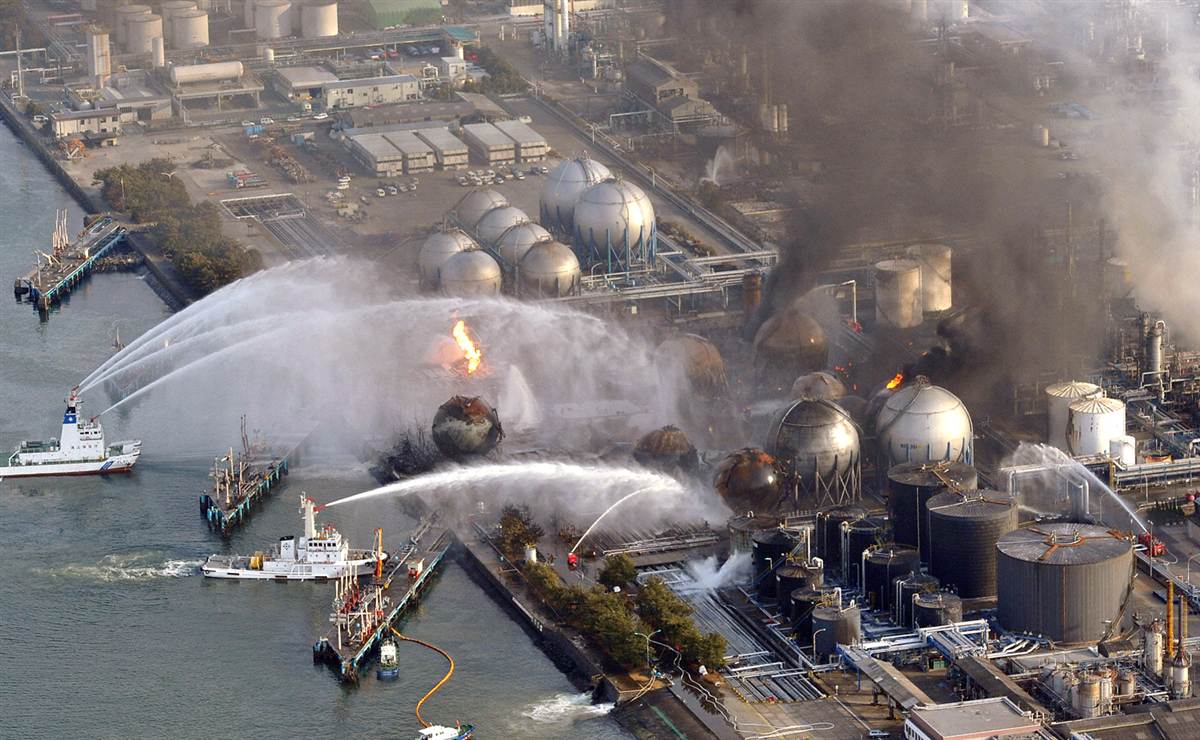The Fukushima Daiichi Nuclear Disaster- What happened? The Great East Japan Earthquake (magnitude 9.0) occurred on March 11, 2011 at 2.46 pm and did considerable damage in the region. The large tsunami it created caused significant damage as well. Fukushima Daiichi was one four nuclear power plants with eleven reactors between them in the region operating at the time and all shut down automatically when the quake hit. The reactors held up to the seismic activity of the earthquake, but were vulnerable to the tsunami. Power, from grid or backup generators, was available to run the Residual Heat Removal (RHR) system cooling pumps at eight of the eleven units, and despite some problems they achieved ‘cold shutdown’ within about four days. The other three, at Fukushima Daiichi, lost power at 3.42 pm, almost an hour after the quake, when the entire site was flooded by the 15-metre tsunami. This disabled 12 of 13 back-up generators on site and also the heat exchangers for dumping reactor waste heat and decay heat to the sea. The three units lost the ability to maintain proper reactor cooling and water circulation functions. It took weeks to stabilize the reactors.
Evacuation and Radiation: The government issued an evacuation instruction for residents within 3km radius in the beginning. Eventually it was expanded to within 20km, and the residents of a range of 20km -30km were instructed to stay indoors. There have been no deaths or cases of radiation sickness from the nuclear accident, but over 100,000 people were evacuated from their homes to ensure this. Government nervousness delays the return of many. As of July 2012, all nuclear energy efforts are suspended. The image below is a map depicting ground radioactive iodine levels based on US aircraft monitoring data.
Japan’s New Energy Strategy: Japan has limited domestic energy resources that have met less than 9% of the country’s total primary energy use since 2012, compared with about 20% before the removal of nuclear power following the Fukushima plant accident.t is the third largest oil consumer and net importer in the world behind the United States and China. Furthermore, it ranks as the world’s largest importer of liquefied natural gas and second-largest importer of coal behind China. The image below is a graphic representation of Japan’s energy consumption.
References:
1. Fukushima on the Globe
http://fukushimaontheglobe.com/the-earthquake-and-the-nuclear-accident/whats-happened
2. World Nuclear Association
http://www.world-nuclear.org/info/safety-and-security/safety-of-plants/fukushima-accident/
3. EIA
http://www.eia.gov/beta/international/analysis.cfm?iso=JPN




a lot of detail. Good job
your image at the start isn’t of the fukushima accident, it looks like an oil refinery fire, those spherical tankers are for oil storage
this image gets used in many presentations and videos talking about nuclear disasters and simply is an inaccurate representation of a nuclear disaster. If you want to use an image to scare people the chernobyl accident has accurate and devastating images
Agree with Callum, this is not Fukushima Daiichi and likely an oil refinery. Hilarious.